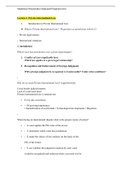Samenvatting
Summary Very detailed lecture notes (lecture 1-13) for Comparative Private International Law Course. Perfect for Exam Preparation
Very detailed lecture notes (lecture 1-13) for Comparative Private International Law Course. Perfect for Exam Preparation
[Meer zien]




